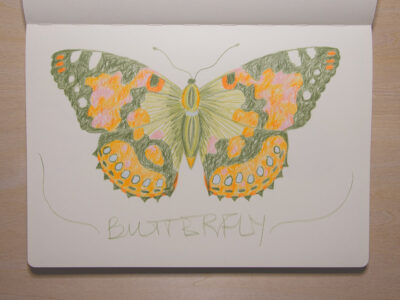Bees and butterflies are responsible for pollinating the flowering plants that produce the food we eat, provide food for other animals, and make our landscapes beautiful. Right now their populations are in a state of decline. The main culprits are habitat loss, pesticide use, and climate change.
Here are some of the ways you can support your local pollinators:
Plant more flowers:
The biggest issue for pollinators is habitat loss. They don’t have enough flowers to feed on, so plant some — plant lots. Plant a variety and focus mainly on native plants. They will feed on non-natives, but many bees have evolved to only feed on specific plants, and those are certain to be natives.
“Have fun growing a bunch of native plants and grow the weirdest ones you can and just have fun with it.”
“Saving the Bees: Why Honeybees Are Not the Answer”
Provide nest sites:
75% of our native bee species make their nests underground. They need bare patches of soil to dig into, so if you have a yard, you could leave a patch of it open. Other bees will nest in twigs above ground, so consider leaving a messy brush pile out somewhere.
5 Ways to Increase Nesting Habitat for Bees
Butterflies don’t nest, but they are specific about which plants they lay their eggs on. The monarch butterfly, for example, is highly specific — it will only lay its eggs on milkweed. You could find out which plants are good hosts for the butterflies in your area and grow those.
Stop using pesticides:
Pesticides are a major threat to bee and butterfly populations. They can be contaminated when they are directly in the line of spray, when they walk on a plant that has been sprayed, when they feed on that plant’s pollen or leaves, and then when they carry the pollen back to their nests to feed their young. Ground nesting bees can also be contaminated by pesticides in the soil.
Buy organic food:
You can address the pesticide issue on a broader scale by buying organic foods. If you have the resources, vote with your dollars for a healthier, more sustainable agricultural system. Or shop at your local farmer’s market where organic or nearly organic practices are the norm. And while you’re there, find a local beekeeper and buy your honey from them.
Pick one or two of these ideas, say a silent ‘thank you’ to your local pollinators, and start supporting healthy bee and butterfly populations.
Source: various podcasts and blog posts by the Xerces Society.

 Why Honey Bees Are Not the Answer
Why Honey Bees Are Not the Answer